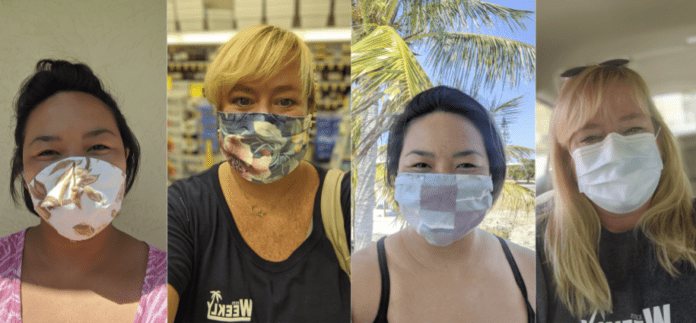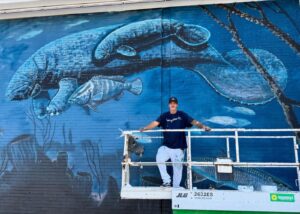
I don’t know whether it’s the relative lack of people or less wild weather (until recently, anyway), but the poincianas on our island have looked particularly resplendent in the last week or two.
Lately, however, they’ve been joined by some competition: sea-aqua posters all over town proclaiming in large letters: “No Shirt, No Shoes, No Mask, No Service.”
Of course, given my moniker, you know something like that is going to catch my eye. And to be absolutely clear, there is larger type at the head of one version of the poster that offers the apparent intended message: “Mask Up, Key West!” Given that NS x 3 message, however, it’s worth talking a bit more about what we know about COVID-19 transmission and its prevention.
First off, I took a peek at the wording of Emergency Ordinance 20-05, the law on which the poster is based. It’s all about wearing a mask, not about covering other body parts. Nor is there any existing municipal, county, state or federal law affecting Keys denizens and their footwear or lack thereof.
Now that we have that legalese out of the way, let’s attempt to unmask some of the mysteries of COVID cohabitation. We know the novel coronavirus lives in — and travels to — the noses and mouths of infected individuals. And we know how it’s primarily transmitted: either by “droplets,” large particles produced by sneezing, coughing and some talking, or “aerosols,” smaller particles in the air. This supports the effectiveness of the mask in reducing its transmission. And while there are probably other ways of getting it in (eyes) and out (our “bathroom products”), it’s mostly the respiratory route that appears to blame. Absorbing it directly through skin doesn’t seem to be happening.
What about picking it up from a surface? We have few studies that have nailed down how long
COVID-19 hangs out on surfaces. What we do have is research regarding similar viruses, including some other coronaviruses. One study was published as late as January 2020, just as COVID-19 was coming to a nose near you. Taken together, it appears the virus survives longer on hard surfaces and perhaps just an hour or two on human skin. Touching one of those hard surfaces where the virus survives and then putting your hand near your nose and/or mouth shortly thereafter would seem to be one mode of transmission.
But back to the no-shoes question. Although many of us, including me at times, have managed figuratively to put our foot in our mouth during this pandemic, there’s probably a low risk of COVID-19 acquisition unless we do so literally. The jury’s still out on whether the virus lives longer on the sole of a shoe or a rubber flip-flop, but one reason gloves are not recommended for everyday use is that the virus appears to live longer on them than on human skin. It’s not much of a stretch, then, to figure out it might be easier to get the virus from our footwear than our feet.
Sign or no, based on my limited population sampling, most people seem to get that it’s all about the mask. Kudos to the people I’ve run into, in and out of establishments, that are on board. And I’m all for a catchy slogan to hammer home the point. I think, however, I would have preferred a more accurate one that pays homage to our sometime Key West resident and country singer Kenny Chesney: No Shirt, No Shoes, No Problems, but please wear your mask!
























